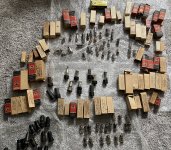Paradox916
Well-known member
That reminds me I got a bunch of tubes from my grandfather he was really into building HAM radios and 99% of of them I’m just to sure if they have any practical applications for me
I’ll try and post a pic of them later.
I’ll try and post a pic of them later.




